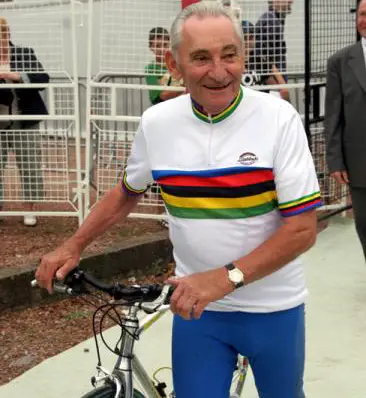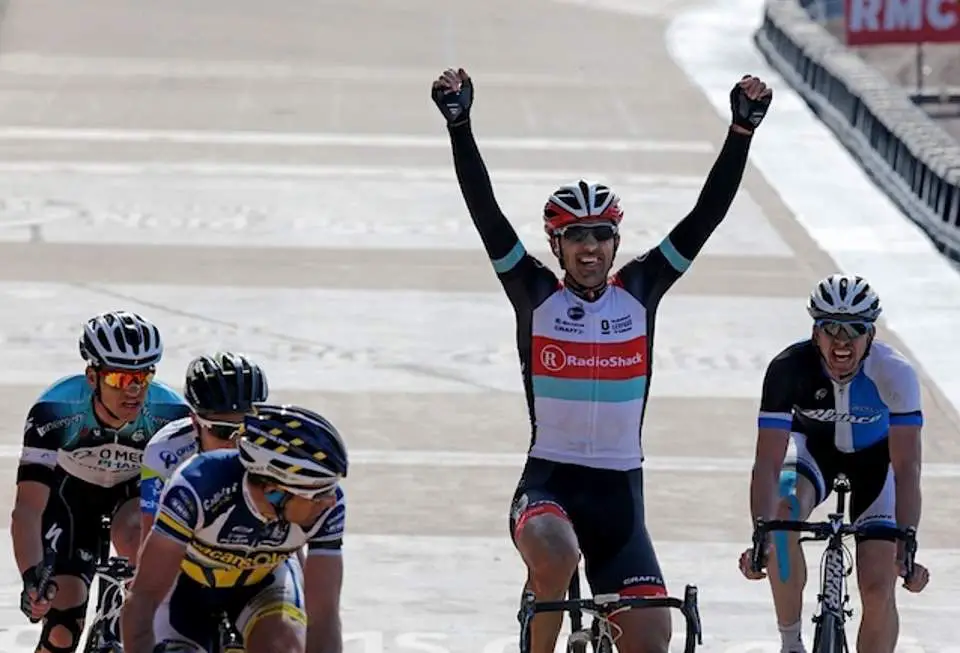The Trouée d’Arenberg, also know as Tranchée d’Arenberg, (Trench of Arenberg), Trouee de Wallers Arenberg, is a straight cobbled road passing through the Arenberg Forest in northern France, and highly considered as the most dangerous and toughest part of the Paris-Roubaix.

Trouée d’Arenberg first proposed by Jean Stablinski
The 2.4 km cobbled road first used in Paris-Roubaix in 1968, and quickly became the race’s symbol. The road was proposed for the “Queen of the Classics” by former professional cyclist Jean Stablinski.
Stablinski had special knowledge of Arenberg. Before he even turned professional he worked in the mine at the southern entrance to the Forest.
He lived in the department all his life. He was born just north of Arenberg and later lived in Valenciennes, just to the south. He knew the area as well as anyone, so the organizers turned to him when they saw the teeth being pulled from their race. He knew where there were hundreds of terrible cobbled stretches deep in the countryside, including the Tranchée d’Arenberg, which were to the east of the original route.
“Not many people know it but an underground roadway runs directly below the Tranchée. I am the only man to have walked under and raced over the cobbles of Arenberg”
Jean Stablinsky
As a miner, he had worked beneath the road and as a cyclist, he had ridden along it. The mine closed in 1990 and the passage is now preserved. Although almost 100 km from Roubaix, the sector usually proves decisive, and as Stablinski said,
“Paris–Roubaix is not won in Arenberg, but from there the group with the winners is selected.”
Jean Stablinsky
Sadly, maybe ironically, Stablinsky never won the Paris-Roubaix.
Stablinski died after a long illness on 22 July 2007. On 7 April 2008, he was remembered by a memorial beside the Wallers-Arenberg road he had introduced to Paris-Roubaix. The memorial was made in blue limestone from Soignies by the sculptor Michel Karpovitch.


“The forest is Paris-Roubaix. It’s unique, only in this race do you have to ride through Arenberg, no other.”
Franco Ballerini, 1998 Paris-Roubaix winner.
Wouter Weylandt said once:
“Before the Arenberg, it is like a bunch sprint in a major Tour. The favorites are often together, still watching each other and still with their teams around them, but they are fighting for their place, even using a lead-out train to get onto the cobbles first. It’s 70 kilometers per hour, then you hit the cobbles. That is the difficulty and danger of Arenberg today.”
Wouter Weylandt
Another quote from Filippo Pozzato:
“It’s the true definition of hell. It’s very dangerous, especially in the first kilometer when we enter it at more than 60 kph. It’s unbelievable. The bike goes in all directions. It will be a real spectacle but I don’t know if it’s really necessary to impose it on us.”
Filippo Pozzato
The passage was closed from 1974 to 1983 by the Office National des Fôrets. Until 1998 the entry to the Arenberg pavé was slightly downhill, leading to a sprint for best position. This was as a result of the triple Paris-Roubaix winner (1996, 2000, 2002) Johan Museeuw‘s crash in 1998 as World Cup leader, which nearly cost his leg to gangrene.
The route was reversed in 1999 to reduce the speed. In 2005 the Trouée d’Arenberg was left out, organizers saying conditions had deteriorated beyond safety limits. Abandoned mines had caused sections to subside. The regional and local councils spent €250,000 on adding 50 cm to restore the original width of three meters and the race continued using it.

In 2001 a French rider, Philippe Gaumont, broke his femur after falling at the start of the Trouée when leading the peloton. He said:
“What I went through, only I will ever know. My knee cap completely turned to the right, a ball of blood-forming on my leg and the bone that broke, without being able to move my body. And the pain, a pain that I wouldn’t wish on anyone. The surgeon placed big support [un gros matériel] in my leg because the bone had moved so much. Breaking a femur is always serious in itself but an open break in an athlete of high level going flat out, that tears the muscles. At 180 beats, there was a colossal amount of blood being pumped, which meant my leg was full of blood. I’m just grateful that the artery was untouched.”
Gaumont spent a month and a half in bed, unable to move, and was fitted with a 40 mm section fixed just above the knee and, to the head of the femur, with a 12 mm screw.

Cobbles of Trouée d’Arenberg as Souvenirs
The Trouée d’Arenberg is rated with 5 stars, which means the cobbles are extremely difficult to ride because of their irregularity.
So many fans and tourists have taken away cobbles as souvenirs that the Amis de Paris–Roubaix (see notes 1) have had to replace them.
Notes
- Amis de Paris–Roubaix: es Amis de Paris–Roubaix – the “friends” of the race – is an enthusiasts’ group founded by Jean-Claude Vallaeys in 1983. It is based in France but open to members all over the world. Its aim was to find enough stretches of cobbled road to preserve the nature of the race.

SOURCES
- Paris-Roubaix on Wikipedia
- Jean Stablinski on Wikipedia
- Iconic Places: The Forest of Arenberg on CycleSportMag
- Arenberg on Wikipedia
- Johan Museeuw on Wikipedia
- BikesOnline Carlsbad: Your Premier Cycling Destination in San Diego County - June 15, 2025
- Top 19 fastest Paris-Roubaix editions - April 14, 2025
- Fausto Coppi in Africa [A Very Rare Photo] - January 4, 2025

